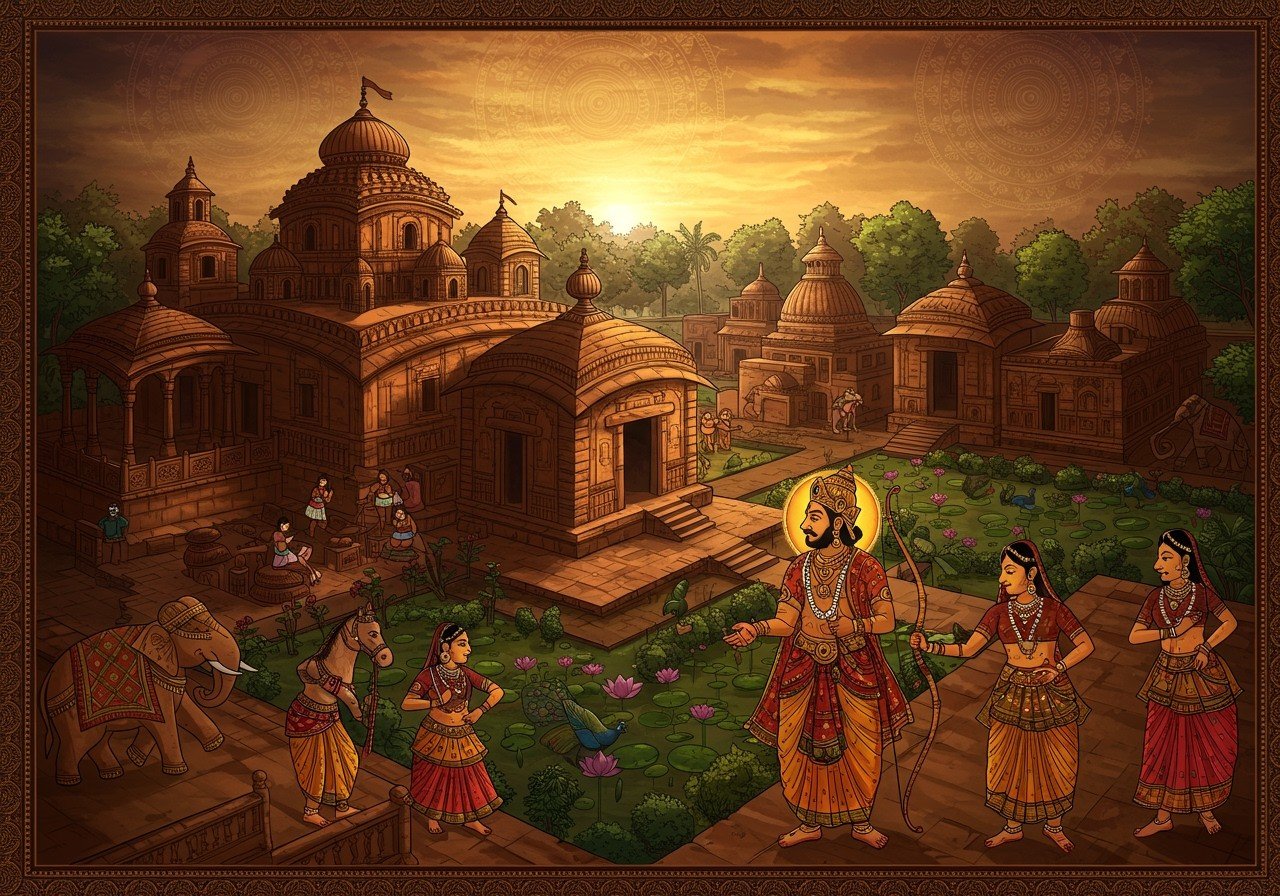
The Mallabhum Kingdom, historically known as Bishnupur, holds a special place in Bengal’s history and culture. This ancient realm, established by the Malla dynasty, is renowned for its rich heritage and significant contributions to art, architecture, and literature. Journey with us as we uncover the captivating story of Mallabhum, from its 7th-century origins to its enduring legacy in modern Bengal.
Origins and Early History (7th Century CE)
The Mallabhum Kingdom’s story begins in the 7th century CE with the Malla dynasty. Its strategic location fostered prosperous trade and cultural exchange with neighboring regions. Early Malla rulers consolidated power and established a stable system of governance, navigating crucial battles and forging alliances that shaped the kingdom’s trajectory.
Cultural Flourishing: A Renaissance
Mallabhum is celebrated for its exquisite terracotta temples, a testament to its architectural prowess. The Malla kings, particularly during the 17th and 18th centuries, were great patrons of art and literature, fostering a cultural renaissance. Traditional festivals, especially Durga Puja, are observed with unique customs in Mallabhum. The renowned Chhau dance, a vibrant expression of the region’s artistic spirit, along with its distinctive music and other cultural elements, profoundly influenced neighboring areas, leaving an enduring mark on Bengal’s cultural landscape.
Society and Economy: Structure and Sustenance
Mallabhum Kingdom’s society was hierarchical, with distinct roles for the king, nobles, and commoners. Agriculture formed the backbone of the economy, providing sustenance and supporting trade networks that facilitated the exchange of goods both near and far. Skilled artisans and craftsmen played a vital role, particularly in the textile and metalworking industries. A well-structured taxation system contributed to the kingdom’s prosperity. Social customs, family structures, educational practices, and religious beliefs shaped daily life.
Political Landscape and Governance: Administration and Might
The kingdom’s administration was organized through local chieftains and governors, maintaining law and order through a structured legal system. The Malla army, with its strategic prowess, played a crucial role in defending the kingdom. Diplomatic relations with neighboring kingdoms strengthened Mallabhum’s political standing. The kingdom effectively managed internal challenges and rebellions, with royal family succession practices playing a key role in maintaining stability.
Decline and Legacy: Enduring Influence
Internal conflicts, economic difficulties, and external invasions eventually contributed to Mallabhum’s decline. Key battles marked the end of its dominance. However, the kingdom’s cultural contributions remain deeply ingrained in contemporary Bengal. Ongoing preservation efforts at heritage sites continue to highlight Mallabhum’s historical importance.
Mallabhum Kingdom: Key Sites and Exploration
A detailed map of Mallabhum reveals its major cities, including Bishnupur, renowned for its terracotta temples. The kingdom’s capital shifted from Praddumnapur to Bishnupur under Jagat Malla’s rule. The map also illustrates the locations of significant battles and historical events. Natural features, such as rivers and forests, played a vital role in shaping the kingdom’s development. Archaeological sites offer valuable insights into Mallabhum’s rich history, allowing modern visitors to explore and connect with its past, contributing to the preservation of this remarkable kingdom’s heritage. For those seeking to deepen their understanding of Bengal’s cultural heritage, exploring these sites offers a unique and enriching experience.
Poojn.in: Your Gateway to Cultural Treasures
Poojn.in, India’s leading online store for cultural and religious goods, offers a wide selection of products that connect you with the rich traditions of Bengal and beyond. Whether you’re seeking authentic puja items, traditional crafts, or spiritual accessories, Poojn.in provides a convenient platform to explore and acquire these treasures. Discover a diverse range of products, including:
- Bel Malas: Discover beautifully crafted Bel Malas, perfect for your spiritual practices and adding a touch of tradition to your daily life. Available in various styles and designs.
- Tulsi Malas with Radha Locket: Embrace the divine with Tulsi Malas adorned with a Radha locket, symbolizing devotion and spirituality. Crafted with high-quality materials.
- Shiva Lingams: Find exquisite Shiva Lingams, crafted from marble dust and other materials, perfect for worship and creating a sacred space in your home.
With convenient pan-India delivery, Poojn.in makes it easy to access these cultural and religious items no matter where you are. Visit www.poojn.in today to explore our extensive collection and enrich your connection to India’s rich heritage.
Conclusion: Embracing Mallabhum’s Legacy
The Mallabhum Kingdom stands as a testament to a vibrant history and rich culture. From its 7th-century beginnings to its cultural renaissance marked by breathtaking terracotta temples, the kingdom’s influence on Bengal is undeniable. Its structured society, robust economy, and strong governance were instrumental in its growth and impact. Though the kingdom eventually declined, its legacy continues to inspire and inform. By preserving and celebrating Mallabhum’s heritage, we honor its profound contributions to our shared history.


